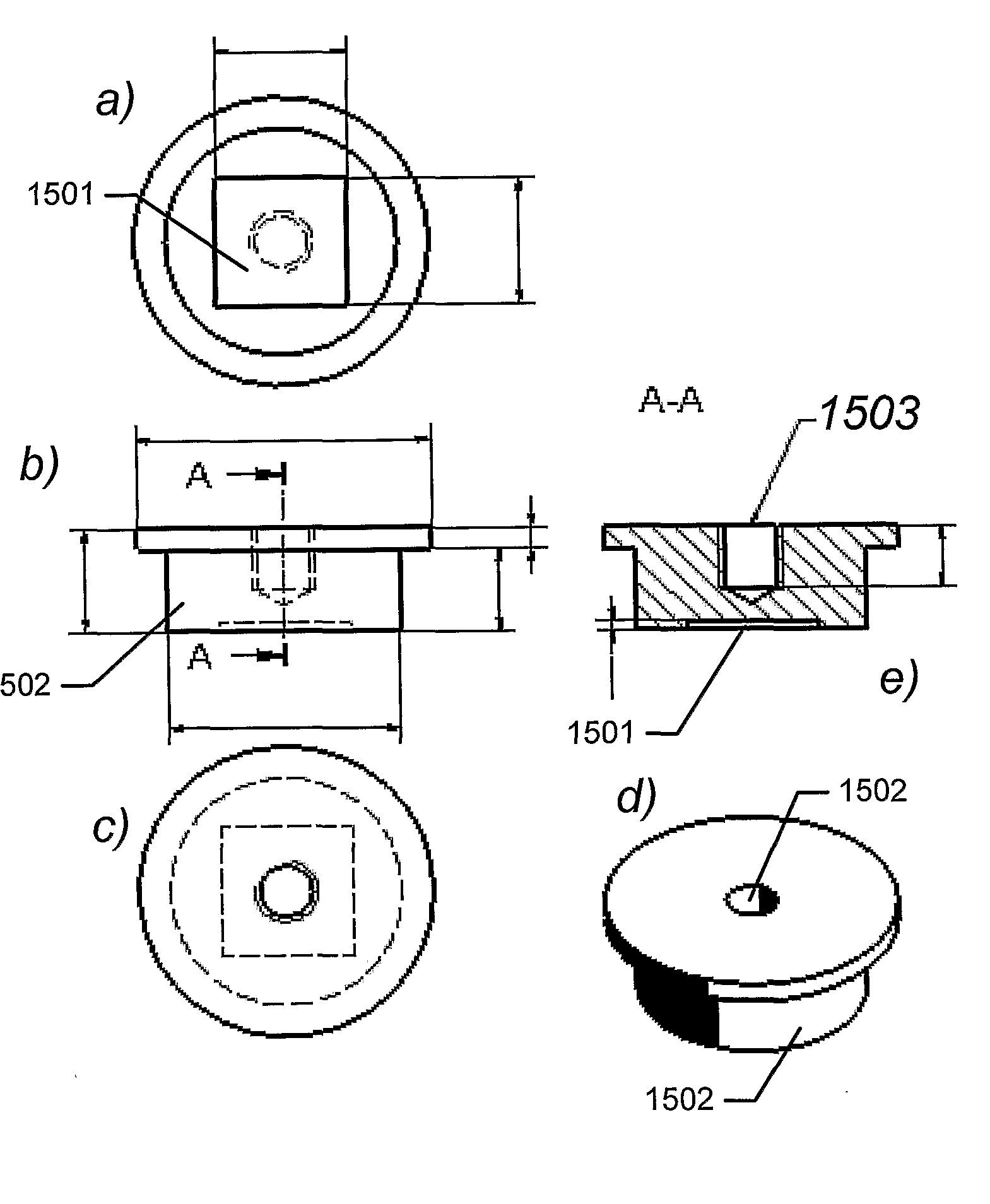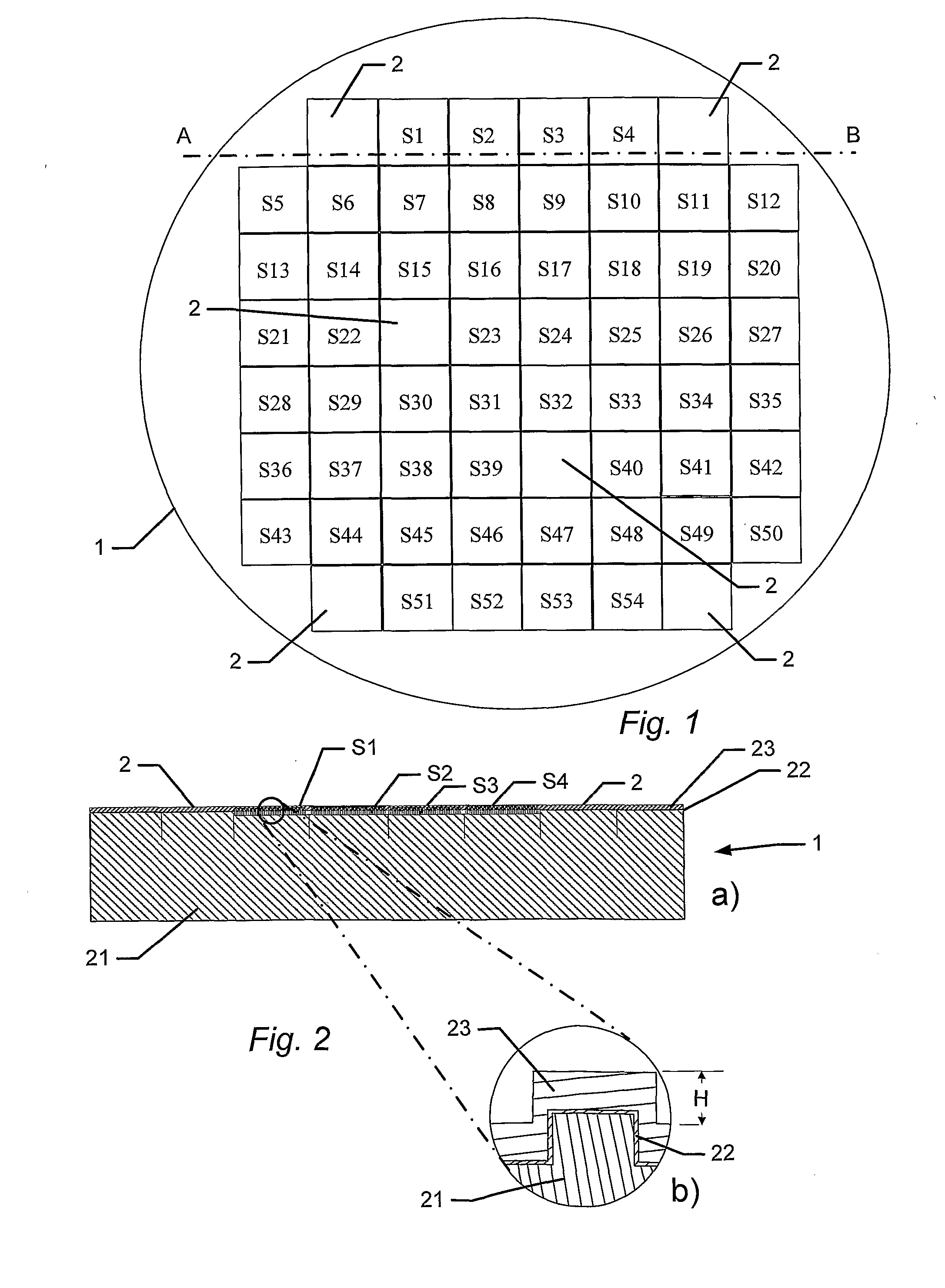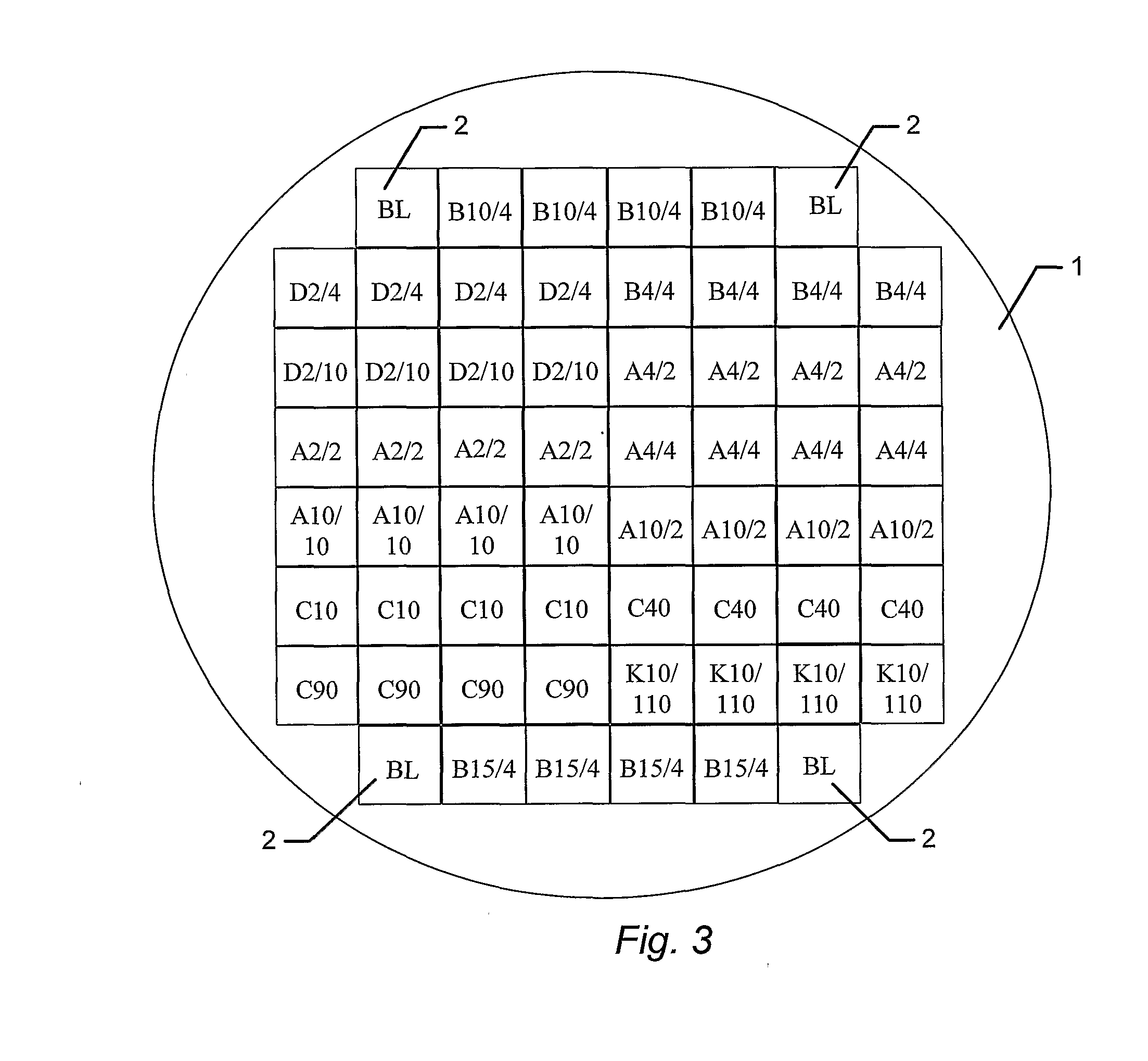Biocompatible Material for Surgical Implants and Cell Guiding Tissue Culture Surfaces
a technology of surgical implants and biocompatible materials, applied in the field of biocompatible materials, can solve the problems of increasing public health problems, implant loosening over time remains a significant problem, and term joint replacements, and achieve the effects of improving the differentiation of embryonic stem cells, promoting the growth of undifferentiated embryonic stem cells, and improving the quality of li
- Summary
- Abstract
- Description
- Claims
- Application Information
AI Technical Summary
Benefits of technology
Problems solved by technology
Method used
Image
Examples
example 1
Manufacture of a 4 Inch BSSA Wafer Comprising 60 Tester Areas
[0126]A single-sided polished silicon wafer (4 inch) with a thickness of 525±25 μm provided a substratum for the manufacture of a biocompatible material. The wafer was an n-type wafer with a resistivity of 1-20 ohm cm. A micrometer-sized pattern was printed onto the polished side of the silicon wafer by standard photolithography and reactive ion etching in a SF6 / 02 discharge according to the following protocol:[0127]1. The wafers were pre-etched with buffered hydrofluoric acid (BHF, BHF is a solution of concentrated HF (49%), water, and a buffering salt, NH4F, in about the ratio 1:6:4) for 30 seconds and then dried under N2 flow, and[0128]2. the wafer was then spin-coated with a 1.5 μm thick layer of photoresist AZ5214, Hoechst Celanese Corporation, NJ, US (the chemical composition can be found at the Material Safety Data Sheet (MSDS) supplied by Hoechst Celanese Corporation). and pre-baked at around 90° C. for 120 seconds...
example 2
Screening a BSSA Wafer Identifies a Biocompatible Material for Mineralisation of Murine Osteoblastic Cells
[0142]A number of wafers were produced as described in connection with example 1. Each wafer was placed in a P15 dish (NUNC, Biotech line) and washed with 70% ethanol and then PBS (6.8 g NaCl, 0.43 g KH2PO4, 0.978 g Na2HPO4*2H2O in 1 liter double distilled water pH 7.4). The wafer was seeded with cells of a MC3T3-E1 murine osteoblastic cell line (Sudo, H et al. 1983, J Cell Biol 96 (1):191-98), at a concentration of 20,000 cells / cm2. The cells were cultured for 4 days in plain medium (alpha-minimal essential medium [α-MEM], 10% fetal calf serum [FCS], 100 U / ml penicillin, and 100 microgram / ml streptomycin (supplied by Gibco, Invitrogen). The cells were maintained in a humidified incubator (5% CO2 / 95% air atmosphere at 37° C.), and subsequently 284 μM ascorbic acid (Wako Chemicals, DE) and 10 mM β-glycerophosphate (Sigma-Aldrich, DK) were included in the growth medium. The cells ...
example 3
Identification of Biocompatible Surfaces for Mineralization of Osteogenic MC3T3 Cells
[0148]A BSSA wafer comprising tester squares having topographical structures selected from the structures identified in FIG. 12 or structures modified from the structures identified in FIG. 12, was prepared.
[0149]A wafer, comprising tester areas having the topographical structures shown in FIG. 12a-k, or structural modifications thereof, was seeded with MC3T3 cells, cultured, and subsequently stained for mineralization employing the alizarin red assay, as described in Example 2, and the level of mineralization was scored based on visual inspection. Images of surface structures found to be particularly favorable for mineralization, and thus shown to be biocompatible for bone-forming cells, are shown in FIG. 13. Each of FIGS. 13a-g shows a table, where each row corresponds to one of the identified structures. The first (left-most) column comprises identification codes for the respective structures, th...
PUM
| Property | Measurement | Unit |
|---|---|---|
| Length | aaaaa | aaaaa |
| Length | aaaaa | aaaaa |
| Length | aaaaa | aaaaa |
Abstract
Description
Claims
Application Information
 Login to View More
Login to View More - R&D
- Intellectual Property
- Life Sciences
- Materials
- Tech Scout
- Unparalleled Data Quality
- Higher Quality Content
- 60% Fewer Hallucinations
Browse by: Latest US Patents, China's latest patents, Technical Efficacy Thesaurus, Application Domain, Technology Topic, Popular Technical Reports.
© 2025 PatSnap. All rights reserved.Legal|Privacy policy|Modern Slavery Act Transparency Statement|Sitemap|About US| Contact US: help@patsnap.com



